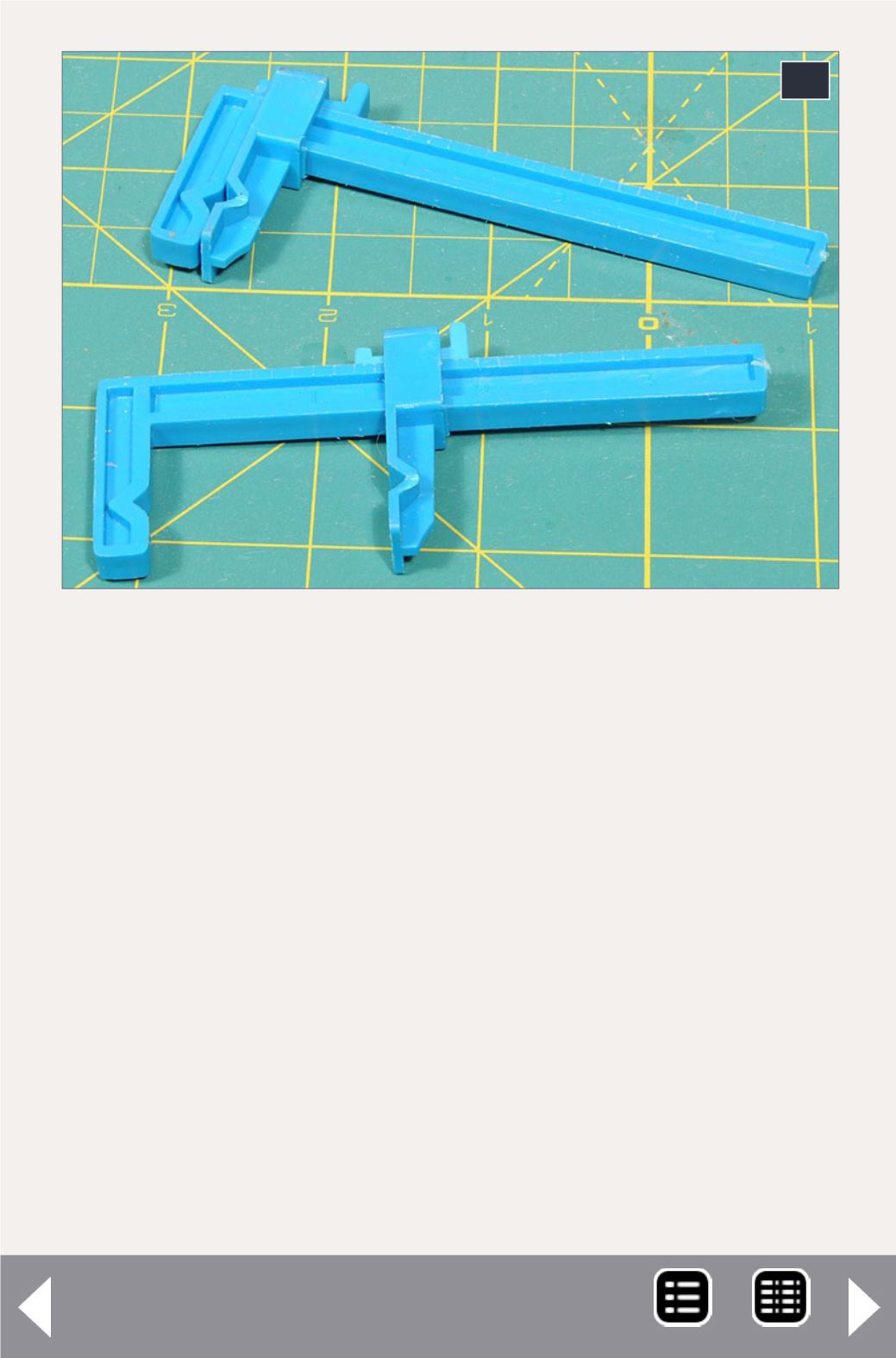
10: These friction clamps consist of a fixed jaw plus a sliding
jaw. A tapered slider at the top of the sliding jaw locks it in
place. To use it, the clamp is placed with the fixed jaw tight to
one side of the work and the sliding jaw is moved up to the
other side of the work, and locked in place by pushing in the
slider. This means you are basically using just finger pressure
to tighten the clamp in place, unlike bar clamps and traditional
C clamps, where a screw is used to apply pressure.
place once locked. Like bar clamps, these clamps can work
on large and relatively small projects. Unlike the brass bar
clamps, these clamps can be locked in place with a single
hand. Another variety of friction clamp uses a thin round
rod with two polycarbonate jaws that move along the rod.
This design theoretically lets you apply the clamp to almost
any shape. But in practice, I found it very difficult to keep
the jaws from rotating around the rod when clamping
10


